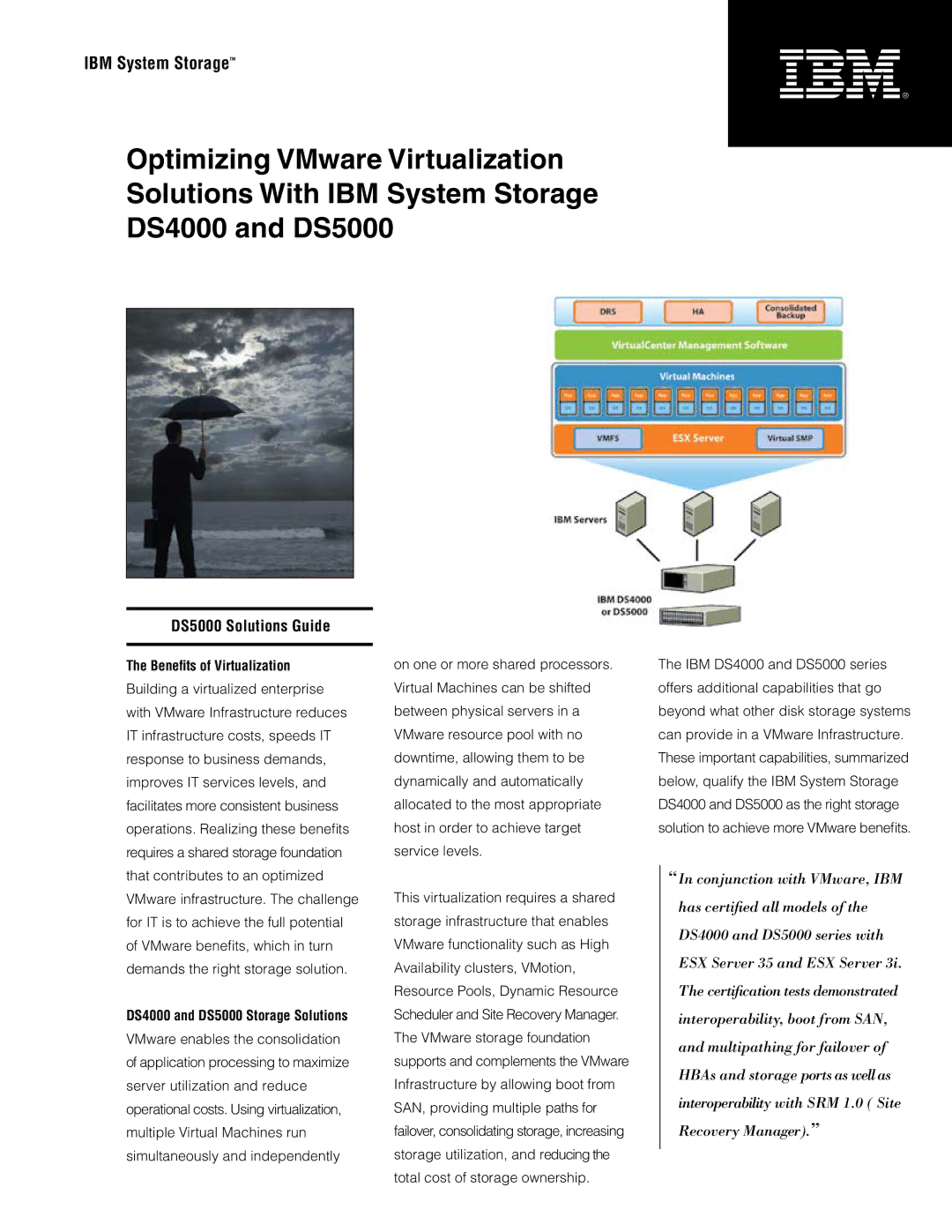
IBM System StorageTM
Optimizing VMware Virtualization
Solutions With IBM System Storage
DS4000 and DS5000
![]() ®
®
DS5000 Solutions Guide
The Benefits of Virtualization
Building a virtualized enterprise with VMware Infrastructure reduces IT infrastructure costs, speeds IT response to business demands, improves IT services levels, and facilitates more consistent business operations. Realizing these benefits requires a shared storage foundation that contributes to an optimized VMware infrastructure. The challenge for IT is to achieve the full potential of VMware benefits, which in turn demands the right storage solution.
DS4000 and DS5000 Storage Solutions
VMware enables the consolidation of application processing to maximize server utilization and reduce operational costs. Using virtualization, multiple Virtual Machines run simultaneously and independently
on one or more shared processors. Virtual Machines can be shifted between physical servers in a VMware resource pool with no downtime, allowing them to be dynamically and automatically allocated to the most appropriate host in order to achieve target service levels.
This virtualization requires a shared storage infrastructure that enables VMware functionality such as High Availability clusters, VMotion, Resource Pools, Dynamic Resource Scheduler and Site Recovery Manager. The VMware storage foundation supports and complements the VMware Infrastructure by allowing boot from SAN, providing multiple paths for failover, consolidating storage, increasing storage utilization, and reducing the total cost of storage ownership.
The IBM DS4000 and DS5000 series offers additional capabilities that go beyond what other disk storage systems can provide in a VMware Infrastructure. These important capabilities, summarized below, qualify the IBM System Storage DS4000 and DS5000 as the right storage solution to achieve more VMware benefits.
“In conjunction with VMware, IBM has certified all models of the DS4000 and DS5000 series with ESX Server 35 and ESX Server 3i. The certification tests demonstrated interoperability, boot from SAN, and multipathing for failover of HBAs and storage ports as well as interoperability with SRM 1.0 ( Site Recovery Manager).”
